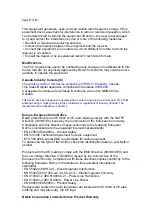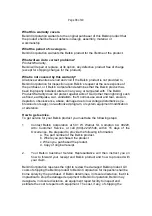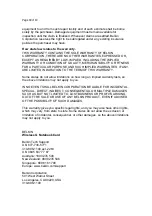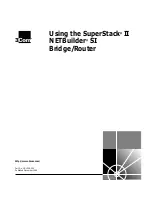
Page 31 of 40
• The router’s power cord is plugged in.
• All cables are connected between the router and the modem.
• All the modem’s LEDs are functioning correctly. If not, see your modem’s user
manual.
• Reboot the router.
• Reboot the modem.
If you continue to have issues, please contact Belkin Technical Support.
If you are not using a Belkin Wireless Router, consult that router manufacturer’s
user guide.
2.
Open your wireless utility software by clicking on the icon in the system tray at
the bottom right-hand corner of the screen. If you’re using a Belkin Wireless Card,
the tray icon should look like this (the icon may be red or green):
[insert F5D7010-06.jpg]
3.
The exact window that opens will vary depending on the model of wireless
card you have; however, any of the utilities should have a list of “Available
Networks”.
Available networks are wireless networks to which you can connect.
If you are using a Belkin 802.11g (G Plus) Router, or Belkin 802.11g (54g)
Router, “Belkin54g” is the default name.
If you are using a Belkin 802.11b Router, the default name should be “WLAN”.
If you are NOT using a Belkin Router, please consult your router manufacturer’s
user manual for the default name.
The name of your wireless network appears in “Available Networks”.
If the correct network name is listed in the “Available Networks” list, please follow
the steps below to connect wirelessly:
1.
Click on the correct network name in the “Available Networks” list.
2.
If the network has security (encryption) enabled, you will need to enter the
network key. Click “Connect”. For more information regarding security, see the
page entitled: “Securing your Wi-Fi Network” on page xx of this User Manual.
3.
Within a few seconds, the tray icon in the lower right-hand corner of your
screen should turn green, indicating a successful connection to the network.
If you are still unable to access the Internet after connecting to the wireless
network, please contact Belkin Technical Support.










































